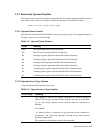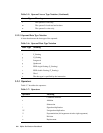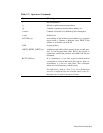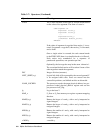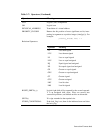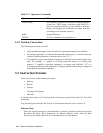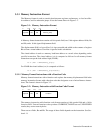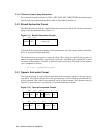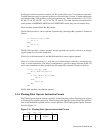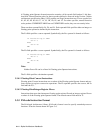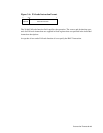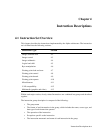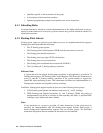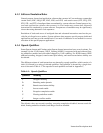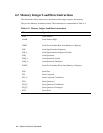
Instruction Formats 3–13
An Operate format instruction contains a 6-bit opcode field and a 7-bit function code field.
Unused function codes for opcodes defined as reserved in the Version 5 Alpha architecture
specification (May 1992) produce an illegal instruction trap. Those opcodes are 01, 02, 03, 04,
05, 06, 07, 0A, 0C, 0D, 0E, 14, 19, 1B, 1D, 1E, and 1F. For other opcodes, unused function
codes produce UNPREDICTABLE but not UNDEFINED results; they are not security holes.
There are three operand fields, Ra, Rb, and Rc.
The Ra field specifies a source operand. Symbolically, the integer Rav operand is formed as
follows:
IF inst<25:21> EQ 31 THEN
Rav ← 0
ELSE
Rav ← Ra
END
The Rb field specifies a source operand. Integer operands can specify a literal or an integer
register using bit <12> of the instruction.
If bit <12> of the instruction is 0, the Rb field specifies a source register operand.
If bit <12> of the instruction is 1, an 8-bit zero-extended literal constant is formed by bits
<20:13> of the instruction. The literal is interpreted as a positive integer between 0 and 255
and is zero-extended to 64 bits. Symbolically, the integer Rbv operand is formed as follows:
IF inst <12> EQ 1 THEN
Rbv ← ZEXT(inst<20:13>)
ELSE
IF inst <20:16> EQ 31 THEN
Rbv ← 0
ELSE
Rbv ← Rb
END
END
The Rc field specifies a destination operand.
3.3.4 Floating-Point Operate Instruction Format
The Floating-point Operate format is used for instructions that perform floating-point register
to floating-point register operations. The Floating-point Operate format allows the specifica-
tion of one destination operand and two source operands. The Floating-point Operate format is
shown in Figure 3–5.
Figure 3–5: Floating-Point Operate Instruction Format
031 26 25 2120 16 15 5 4
Opcode Fa Fb Function Fc



